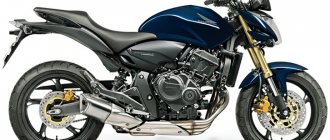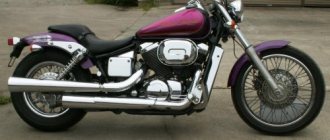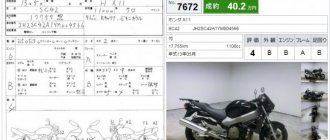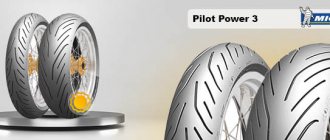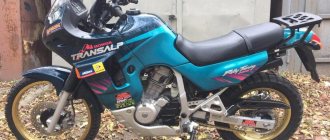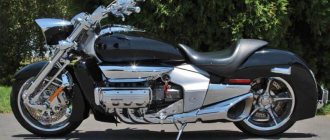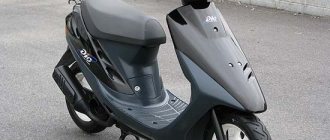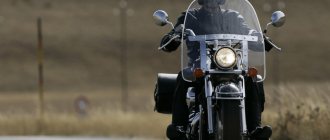Motorcycle Honda CB650F
“Streetfighters” motorcycles have been gaining popularity for several years now. They are comfortable for city driving, but also perform well on the road. In addition, they are distinguished by their appearance. We decided to check how the new Honda CB650F feels in the urban jungle.
The CB model gained popularity thanks to the “five hundred”. However, over time it became clear that the elegant silhouette and 57-hp engine were not enough to satisfy all motorcyclists. Therefore, in 2014, the CB650F model appeared on the market. The urban streetfighter was much better suited to the trends prevailing in the motorcycle market, and the greater capacity and therefore greater power made the target group much larger.
For whom
Here are the main features of this bike:
- Ease of use;
- reliability;
- sustained classic style.
The motorcycle is perfect for those who have already mastered bikes a little in general and want to purchase a machine that will serve them faithfully for many years on city streets and country roads. But we must not forget that this is by no means an all-terrain vehicle.
Samurai heart
Changes also included the drive unit. The four cylinders manage to gain an extra 3kW, which adds punch at higher revs. Thanks to this, the maximum power of this motorcycle is 91 hp, which we will make full use of at 11,000 rpm. Torque has also been increased, which is now 64 Nm at 8000 rpm.
The Honda CB650F delivers power very smoothly. Dynamic acceleration is possible throughout almost the entire rev range. Even when we're in sixth gear and the tachometer reads a lazy 1500, a flick of the right wrist is enough to instantly awaken the latent potential hidden within the Honda. However, its enthusiasm for acceleration in all circumstances causes minor problems when maneuvering or driving in traffic. Then even a minimal gripping movement results in a forward pull. Even when you are in a traffic jam with almost no sensation, the motorcycle constantly “pulls” forward. Sometimes you even need to drive at half speed. However, when you take the CB650F out into the open, you can see that the car likes to breathe. And he has something. An extra few horsepower was gained by upgrading the airflow through the intake, exhaust through the exhaust system. In this case, the suction channels are first shortened, which supplies air to four throttle bodies with a diameter of 32 mm. In addition, the muffler now has two (rather than three) internal chambers, which reduces back pressure. The end hole is also enlarged, making it easier to release air.
Honda CB650F
Dimensions and weight
The motorcycle has rather large dimensions for such a model: it is 2110 mm long, 775 mm wide, and 1120 mm high. The wheelbase of the CB 650 F is 1450 mm, and the seat height is 810 mm. Without fuel, the motorcycle weighs 190 kg and its tank capacity is 17.3 liters. The model will consume about 4 liters of gasoline per 100 km.
Calm “predator”
The new Honda CB650F has been pacified in some respects and sharpened in others. We still have four gold exhaust manifolds going into one short muffler that ends just below the right footrest. It's a very aesthetic trend to keep exhaust systems far behind the passenger footrest. Finishing the muffler basically just below the engine gives the bike a massive look and enhances the impression of a compact figure. The engine exhaust covers match perfectly with the gold exhaust manifolds, also in a gold-copper hue. He was all dressed in red, black and silver lacquer colors.
Honda CB650F
Honda CB650F
Compared to its predecessor, the new CB650F looks more massive thanks to the reduction of the side and front fairing. Thanks to them, the golden engine comes to the fore, and the motorcycle seems more dangerous than it really is. It also strengthens the bulbous tank and shortens the front fender. Overall it gives the impression of being predatory, but without exaggeration.
Honda CB650F
Honda CB650F
Chassis and brakes
The motorcycle is equipped with a stylish steel frame, which is designed in the best traditions of the naked class. The rims of such a futuristic-looking bike are, of course, alloy, because spokes would simply look ridiculous. As for the steering wheel, there is nothing remarkable about it, except for the aggressive shape of the mirrors.
The rear suspension is a pendulum version with a monoshock absorber, and the front is a 41 mm telescopic fork. At the rear, the CB 650 F uses a single-piston caliper with a 240 mm disc for braking, while at the front there are two double-piston calipers with two 320 mm discs.
Changes
The new generation Honda CB650F received, among other things, a new Showa Dual Bending Valve front fork. Both front and rear lighting were made using LED technology. Also, the Nissin front brake pads have been improved so that when braking with one finger, we can stop the bike without putting much force on it.
Honda CB650F
Honda CB650F
Command Center
The clock in the Honda CB650F is transparent and convenient. On the left screen you will see a tachometer and speedometer. On the right is a digital indicator of fuel level, mileage, clock and warning lights. Integrity is transparent and does not overload information.
Honda CB650F
Honda CB650F
Honda CB650F
Good day to all! My motorcycle life has reached the second psychologically important milestone - I have already traveled 1000 km on my own two-wheeled friend and I want to share my knowledge acquired during this time (the first is, in fact, purchasing and obtaining a license). This is my first moto and my first experience, so for many all these things will be obvious, but after reading posts for more than six months, I discovered some points for myself for the first time.
Who is interested, welcome.
-) In a confined space, it is better to turn around with your feet + the arcs must be installed. The first time I put the motorcycle on its side (I will note exactly what I did, gently and slowly) was when I did not expect this at all (although it is generally strange to expect this): in the parking lot near a motorcycle store there was a small the rise where I decided to turn around.
The width of the parking lot was not too wide, so I decided to turn around while standing with my left foot on the asphalt. As a result, I turned the steering wheel too much, released the gas, and when the moto began to tilt towards the descent, I simply couldn’t hold it. I concluded for myself that in limited spaces it is better to stand on the trajectory completely “with your feet” without sitting on the bike in several movements back and forth + if not for the arches, the entire weight of the bike would fall on the gearbox foot and the left engine cover. Arches are a “must have”! -) You can't relax on a motorcycle! Never! The basis for this conclusion was the case when, on my first trip to work, I pulled into the yard in the morning to check the map and carefully placed the motor on the right side, having unsuccessfully chosen a combination of speed, steering angle and the force of pressing the brake pedal. Again I just couldn’t hold it, dropped it almost out of the blue ((And on the way home from work I caught the mirror of a car standing in a traffic jam with my mirror (as a result of this, most likely they also pinned the scratch on its rear fender on me, but how can I find out, and I don’t know if it’s worth it.) Therefore, I decided for myself that on two wheels you always need to be extremely careful, for a car it could just be a scratch, but for a motorcyclist any incident could result in injuries, it’s better not to allow this.
-) Paint chips/scratches on a motorcycle are better treated than threads. Damage of varying degrees of severity on a bike, and indeed on any vehicle, is inevitable. But those “jambs” that are located in potentially accident-prone places, such as mirrors, arches, steps, license plate frame, etc. It’s better to treat it with something, be it spray paint or a marker that matches the color of the part. This idea was prompted by the actions of the traffic police inspector, who arrived at the scene of the accident described in the paragraph above with my participation, how long he tried to find “traces” of contact on the moto and how many and at what angles we rearranged the moto at his request (tilt angles were clearly incompatible with the movement). If, God forbid, an accident occurs, any scratch that has not been treated in advance (and therefore, in the opinion of the second participant in the accident and the inspector, is “fresh”) can be used against you. I decided to paint them over for myself, but I haven’t chosen what to use yet.
-) When going on a trip to an event, take a change of clothes with you and think in advance where to leave your equipment. We decided to go to a country event for the first time together on a motorcycle - the Russian Helicopter Slalom Championship at the Shevlino airfield in the Moscow region. The distance from home, approximately 100 km along the Moscow Ring Road and Pyatnitskoye Highway, was driven quickly (by my first-season standards), but upon reaching the place in 29 degree heat, we quickly realized that with full equipment in hand, the vacation would not be so carefree. The idea that we needed to leave our equipment somewhere did not raise any doubts, we began to think about how to do this: naturally, there were no wardrobes around, we did not have trunks or bags. After a little thought, we decided to take a risk and went to local cafes, asking if they could unload at least for money. In the second cafe, a guy offered to help if we agreed to lay down our equipment on the grass, and we, of course, agreed. Taking all the valuables and documents with us in our backpack, the equipment was left in the second cafe we came across, and we, with faith in the honesty of people, went to enjoy the show. Passing by an experienced biker, we noticed that he was slowly changing his shoes into small compact slippers! For the rest of the day I was fiercely jealous of him wearing his motorcycle boots. As a result, for the future we decided to do the following:
- Buy a bag for the tank, be sure to have a window for the navigator
- Be sure to complete it with motorcycle shorts, motorcycle T-shirts and motorcycle sneakers
- Take with you unlimited faith in people, as well as a motorcycle cover, under which you can then leave all your equipment in the parking lot
In my opinion, the convenience of time spent at the event outweighs the risk of loss of property.
Well, now a little about the motorcycle (I can only compare it with the training Yabrik, 250 cc stealth, as well as the Honda CBR300):
pros
- Engine and gearbox: the engine is very “elastic”, it drives in almost any gear and at any speed (you can easily go 105 km/h in second, or you can normally go from 35 to 6th! According to my subjective feelings of comfort in terms of engine noise / speed optimal for the city are 3-4 gears, for a highway or highway, naturally, 6. And there are no vibrations, the engine runs very smoothly and softly at any speed, gears shift clearly, compared to stealth it’s just heaven and earth, Compared to the cbr300, it’s clearer and without glitches (in Siberia and Russia there are still sometimes problems when turning on the first one, maybe it will go away after running in)
- Suspension and landing: the suspension is quite comfortable for our roads, which during this 1000 km did not give me a single reason to throw bricks. There were no problems with it either when exiting/entering cut asphalt, or when changing lanes on the Kiev highway between lanes at 140 km/h through a considerable rut, or when entering turns with potholes on the Pyatnitskoe highway. The landing position is simply excellent for city driving: level and comfortable for the 5th point (I haven’t driven long distances yet, but for an hour and a half on one trip there is no discomfort at all, I feel like I would be ready to repeat the route right away), my legs don't go numb.
- Fuel consumption: with my fairly quiet driving mode (50% in the city at an average speed of 40 - 100 km/h and on the highway at a speed of 100 - 140 km/h), a tank of 17 liters from refueling to refueling is enough (without taking into account the reserve) at 280-300 km
Minuses
- Wind protection: well, everything is clear here, it’s simply absent as a class, because it’s a naked one. At 90-100 km/h it’s quite comfortable, at 100-120 it’s bearable, above 120 it starts to blow away
- Expensive official service: for the first maintenance with a mileage of 1000 km, the officials had to pay a tidy sum, just like for a car. But what to do))
- Small “glove compartment” under the saddle: there is no space at all! While picking up the motorbike from the showroom, I wanted to place the documents under the saddle (two copies of the policy, PTS, OSAGO and the agreement of safekeeping with the act) folded in half in a file and at first I could not fully lock the lock, then I could barely open it to pull out the documents. There is more space under the saddle on the CBR300.
- Some inattention to detail: despite the general level of workmanship, there is still sometimes the feeling that the motorcycle is not the most expensive, that it could have been made a little better. For example, only the front brake handle is adjustable, the clutch handle is not, but they could have done so. Or the plastic covers near the tank are attached to the body with double-sided tape, which holds it in place. There is also a gap under the saddle into a compartment for documents and a battery; I think everything will flood there at the car wash. And there are such little things.
Overall, I’m very pleased with the device, it has greatly diversified my life, but that, as they say, is a completely different story...
Brief history of the model
- 2014 - start of production and sales of the Honda CB650F model.
Model:
Honda CB650F / CB650FA (All regions).
Frame number:
MLHRC75X*XXXXXXXX~, RC83-XXXXXXX (Japan).
Factory designation:
CB650FE, CB650FAE.
- 2015 - no significant changes.
Model:
Honda CB650F / CB650FA (All regions).
Frame number:
MLHRC75X*XXXXXXXX~, RC83-XXXXXXX (Japan).
Factory designation:
CB650FF, CB650FAF.
- 2016 - no significant changes.
Model:
Honda CB650F / CB650FA (All regions).
Frame number:
MLHRC75X*XXXXXXXX~, RC83-XXXXXXX (Japan).
Factory designation:
CB650FG, CB650FAG.
- 2017 - by optimizing engine settings, maximum power increases to 89.7 hp and torque to 64 Nm.
Model:
Honda CB650F / CB650FA (All regions).
Frame number:
MLHRC75X*XXXXXXXX~, RC83-XXXXXXX (Japan).
Factory designation:
CB650FH, CB650FAH.
- 2018 - no significant changes.
Model:
Honda CB650F / CB650FA (All regions).
Factory designation:
CB650FJ, CB650FAJ.
- 2019 is the last year of production.
Model:
Honda CB650F (ABS) (South America).
Factory designation:
CB650FAK.
Control
In terms of driving, the Honda doesn't surprise - it still handles as confidently and effortlessly as its predecessor. However, compared to the quasi-competitive (and my personal favourite) Yamaha MT-07 (which however has a twin-cylinder engine and a 16bhp downgrade), it's a bit more raw. The mass does its job. The Honda isn't just massive at first glance - it weighs 208kg (including full oil and fuel tanks), while the MT-07 is 26kg smaller at 182kg. However, despite the correct weight, the Honda is light and enjoyable to drive.
Honda CB650F
Honda CB650F
Honda CB650F
Honda CB650F
The subtle facelift is out of town Honda for good. The motorcycle has become more expressive, which will certainly appeal to many drivers. Despite the menacing first impression, the CB650F is not a devil on wheels, but rather a pretty ass that everyone willingly goes for a walk with.
Post Views: 3,822
